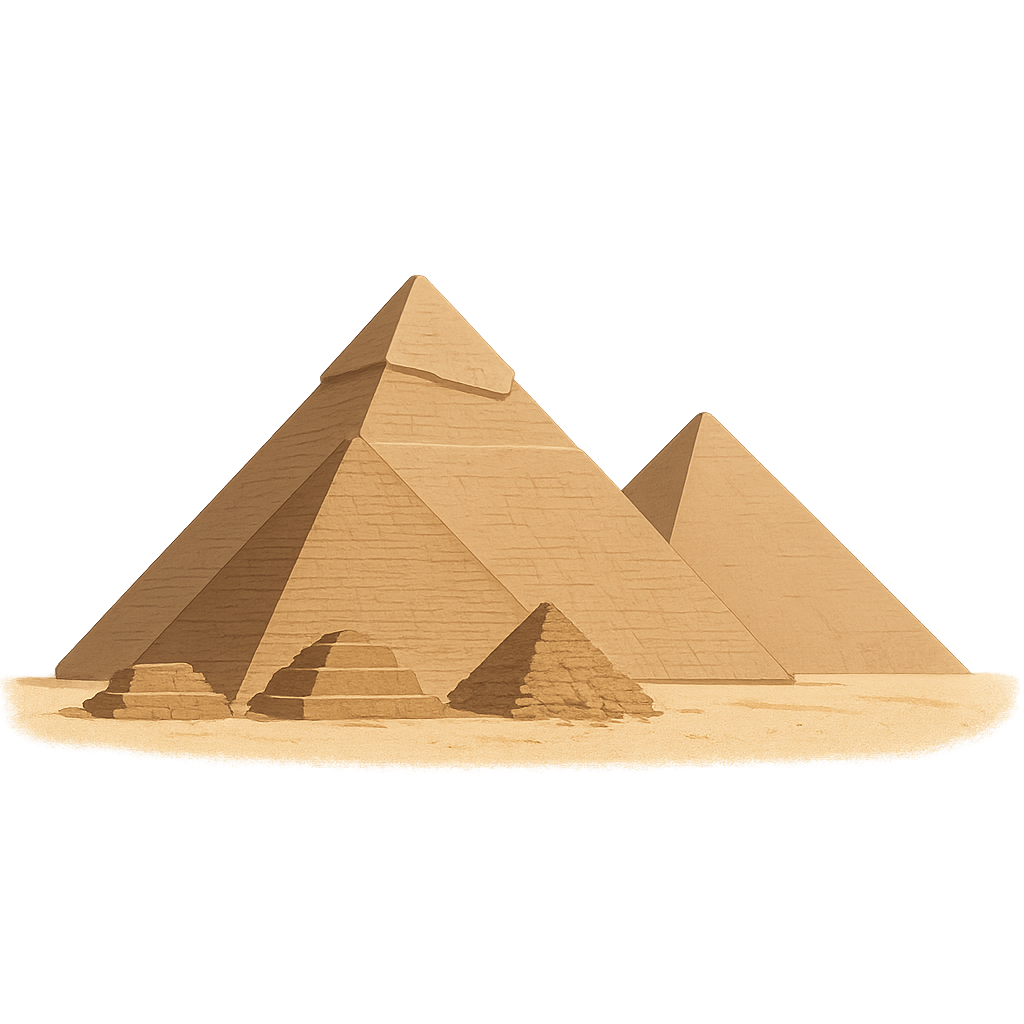The Stone Giants of Giza
Imagine three enormous triangles made of golden stone, reaching for a brilliant blue sky. For thousands of years, I have stood here on the edge of a vast desert, feeling the hot sun warm my ancient blocks. The wind whispers secrets as it sweeps across the endless sand, and in the distance, the mighty Nile River shimmers like a ribbon of life. I am not alone. I have a silent, watchful companion who has crouched before me for ages—a mysterious creature with the body of a lion and the face of a human king. Together, we have guarded this land through countless sunrises and sunsets. Travelers have crossed oceans and deserts just to stand in my shadow and gaze up at my towering peaks. You may have seen pictures of me, but to feel my presence is to feel the weight of history itself. I am the great Pyramids of Giza.
I was not built simply to be a beautiful shape against the horizon. My purpose was far grander, rooted in the deepest beliefs of the people who created me. I am a sacred resting place, a tomb built for kings. Around the year 2580 BCE, the powerful pharaohs of ancient Egypt dreamed of eternity. The largest of my structures was built for Pharaoh Khufu, a monument of such scale the world had never seen. His son, Pharaoh Khafre, built the second, and the third was for Pharaoh Menkaure. The ancient Egyptians believed that a person's spirit, their ka, lived on after death. But to journey into the afterlife and live forever among the gods, the pharaoh needed a safe and eternal home for his body. I was designed to be that home—a magnificent stairway to the stars. My smooth, angled sides were meant to help the pharaoh's spirit ascend to the heavens. Deep within my stone heart, hidden chambers and secret passageways once held incredible treasures: glittering gold, precious jewels, ornate furniture, and everything a king would need to live splendidly in the next world.
My creation was a marvel of human cooperation and brilliance. Forget the old stories of countless slaves being forced into labor. The truth is far more inspiring. I was built by thousands of skilled workers—respected builders, brilliant engineers, and talented artisans who came from all over Egypt to work on this grand project. Their work began far from here, in quarries where they cut millions of massive limestone blocks from the earth. Some of these blocks weighed more than an elephant. During the Nile's annual flood, when the fields were underwater and farming was impossible, these workers transported the giant stones on large wooden boats, floating them right to my construction site. But how did they lift them so high? They used their ingenuity. They built enormous earthen ramps that spiraled around me, and with sheer strength and cleverness, they hauled the stones into place with incredible precision. It was a perfectly organized effort that took decades to complete for each pyramid, a testament to what people can achieve when they share a powerful vision.
For over 4,500 years, I have watched the world change. I have seen empires rise and crumble, languages born and forgotten, and new cities grow where there was once only sand. From the ancient Greek historian Herodotus in 450 BCE to the Roman emperors, and later, explorers and scientists from every corner of the globe, people have come to gaze up at me in wonder. They measure my angles, study the stars from my peaks, and search for the secrets hidden within my stone. I have survived the scorching sun, the shifting sands, and the passage of time. Today, I am still here, a reminder of a magnificent past. I am more than just stone and dust. I am proof of what humans can accomplish with dedication, teamwork, and a dream big enough to touch the stars. I hope I inspire you to learn about the past, to ask big questions, and to build your own amazing things, proving that a great idea can truly stand the test of time.
Reading Comprehension Questions
Click to see answer
